This is part 4 of 4, the final piece of the eCommerce Profit Triad Puzzle. We now know how we can get more customers coming in. Plus we know how to get them spending more and increasing our average order value. Now we’re going to learn how to Get Them Buying Again. Check out this video below to get started:
Here we go, Six Ways To Systematically Get Them Buying Again:
Number 1: Emails and Promotions:
First up, I want to give you an example of emails you might be sending out now. It could be a buy one, get one free or a buy two, get one free, or get 40% off women’s dresses for four days only, that kind of thing. One of the things that I’ve learn’t from this guy I know, Dale Beaumont, was “Your cash flow is determined by your calendar.” So if you’re not doing marketing events out to your database as a regular thing, then you’re not creating those cash flow events. Now I’m going to show you email automation but just really wanted you to hear that statement as it really hit home for me.
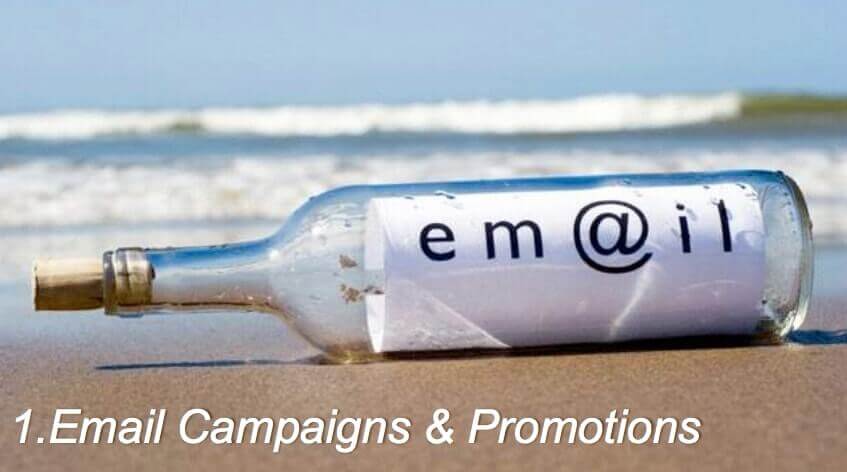
Since we’ve been with our clients, first up we like to, just as a start, get their first promotion out to their list. So think about this for you. We then look at, ok what are you going to do monthly? Start to plan that out, what’s your month by month promotion going to be? And then some of them you can move to fortnightly, so what’s your fortnightly promotion going to be? And some of them even do weekly. So basically what it works out to be is spikes in sales that you wouldn’t have got beforehand.
With eCommerce, there’s two main types of emails that you can do. You can do text-based emails or you can do very visual e-mails, which nearly all big eCommerce stores seem to do. We have found, with certain product types, especially with ladies’ stuff, that really, really works well with the visual type emails. But as a general rule, there’s certainly nothing wrong with doing text-based emails for sales through eCommerce stores. We do things like 4 Day Cash Machines and the gain theologic [SP], those types of campaigns, which you don’t normally see get done in eCommerce, but it works great. So at times, customers get spikes of 40 grand or 20 grand or whatever it is based off their database size.
Number 2: Marketing Calendar
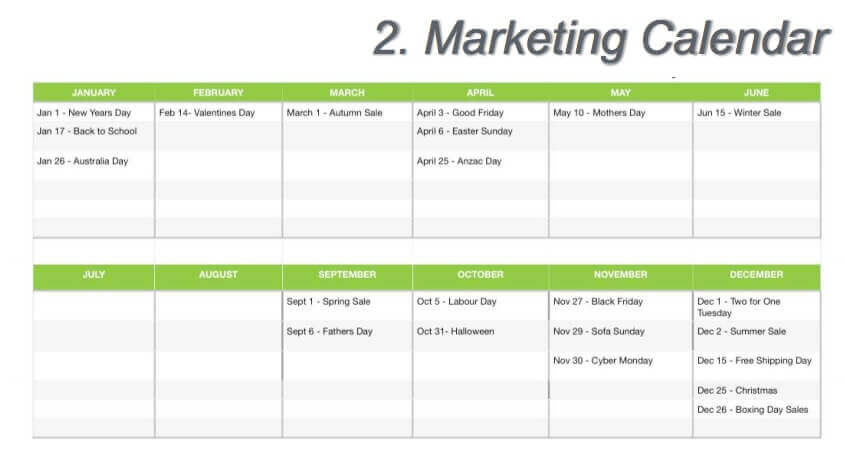
The second one is marketing calendar. As an eCommerce store, you really have to think about what are all the different seasons and what are the different reasons to go to market. So you could have a New Year’s Special, or a Boxing Day Sale or a Mother’s Day Sale or a Father’s Day Sale, those kind of things. So this can actually really, really help with what we were talking about before, with your email campaigns and promotions. This can help to map that out. This is how we plan in this month, this is what’s going out and these are the one or two campaigns that we’re working on this month. Then next month, that’s the one or two campaigns we’re working on. So often we’ll look for, in an eCommerce store, seasonal stuff first, and if there’s a logical season one, let’s run with that because there’s only one opportunity to get that seasonal campaign right and sent out. Then, after that, if there’s not a seasonal thing, we plan what is something special that we’re going to do for the customer base that’s going to excite them, that’s gonna create additional sales, but still be a great win for the business all around.
Number 3: Campaign Stacking
Remember back at the beginning of this mini series I started out stating we want to get away from one-shot marketing and we want to aim to have perpetual motion. This has probably been one of the biggest things that has made a difference in all these eCommerce stores that we’re working in. And at any one stage, we’re working in 10 to 15 different eCommerce stores and testing all this different stuff. So to get perpetual motion we do a thing called, “Campaign Stacking.” And basically what it is is, like a cut down version of a machine which is a really, really basic but it really, really works. You’ll see what I mean as keep reading through.

What happens with most eCommerce stores is they make a sale, and then they might deliver a thank you e-mail, and then they’ll pretty much stop. But say last month, you sent out a campaign and it did really great. You did 100 grand with this campaign. It was just kick ass! And the one before that was a bit of a flop, but two months ago, you did another really, really great campaign. The people who are coming in now didn’t see those campaigns right. So there’s no reason why you can’t turn your winners into evergreen promotions, which is exactly what we do with ours. So now, if we look at this example again, instead of just doing what everyone else is doing and stopping there, we now take what was our best campaign and so, for example, it might be one week or two weeks after they’re in, let’s put that in the order responder sequence. It just goes out to that person. And while they’re in this indoctrination or welcome type sequence, they may not be getting your regular broadcast, but what this does do is instead of a customer just being one-off sale, we’re now going to create multiple selling opportunities for them. So we’re going to engineer, for this customer, some amazing selling opportunities for them to buy again. This stuff really, really, works.
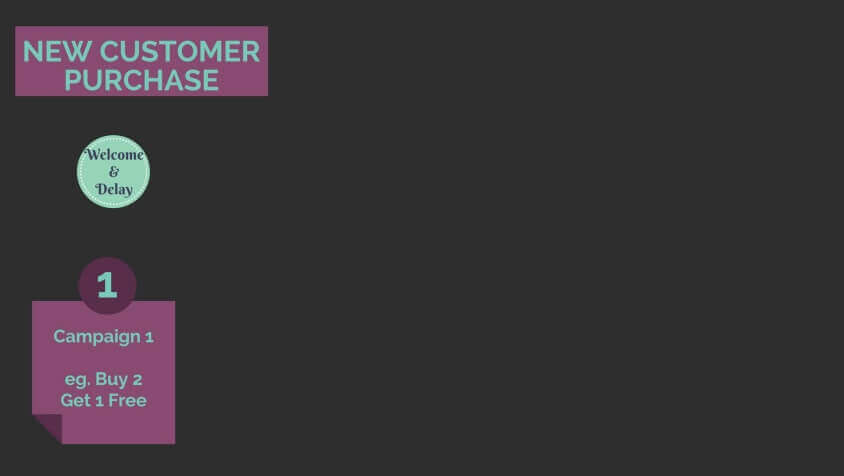
So then once you’ve figured out what was your best campaign, let’s get that straight upfront and make it evergreen. And sometimes, it might be a little bit complicated, but what you can do is duplicate products that already have the special in them, hide them so they don’t show up for everyone else and it’s only the people that have the link who will see those products. You don’t want them showing up in your eCommerce store the whole time and then just keep adding on to that. Whether you want to wait another week or wait another two weeks, you’ve got to figure out what’s right for you. And then what other winning campaign did you have in the past that you can now deploy to that person? And so it just basically drip-feeds out.
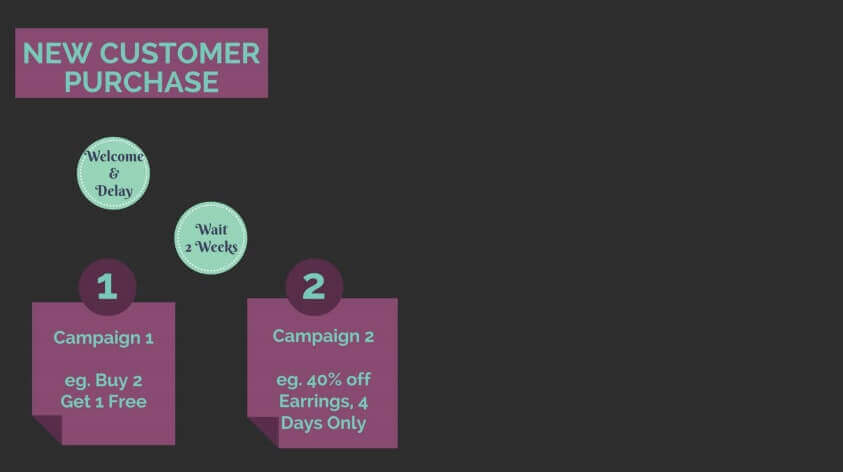
Then there’s no limit to the number of these that you can put together. Remember even if you only just broke even when you made your first sale, because as we know the cost of all this traffic is getting more and more expensive, if you now start to have this campaign stacking going, you’re then giving them multiple, multiple buying opportunities.
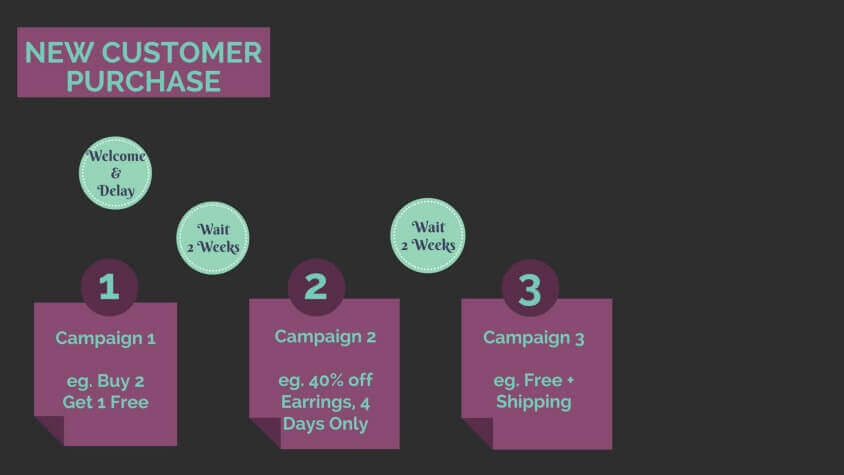
It really works like crazy and can change the maths in your favour. And if you’re doing this and your competition aren’t, then you’ve got a dramatic advantage over them.
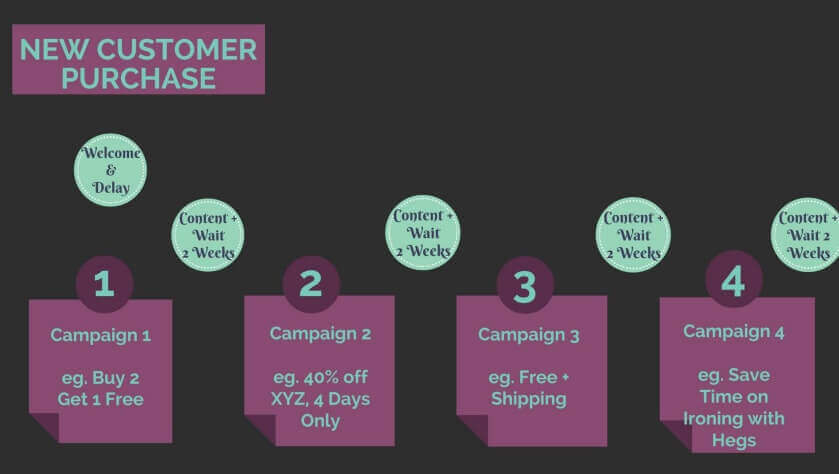
Once they’ve got to the end of your campaigns, then you just spit them out into your main broadcast list and they’d get everything else. But then every new customer that comes in starts to see all specials for the specific sequence for new-comers. So campaign stacking is just absolutely brilliant for eCommerce stores, and I don’t see many of them doing it.
Number 4: Cart Abandonment Series
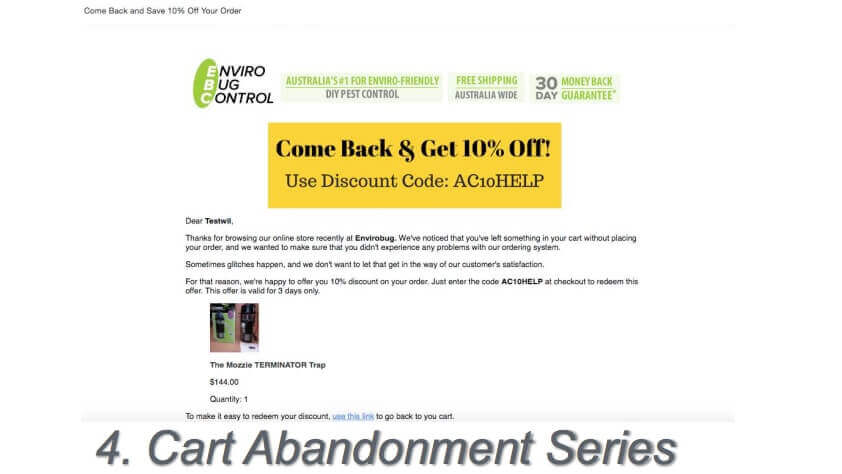
Number four is a cart abandonment series. Most eCommerce stores have one, like the ability for you to send one cart abandonment e-mail. What this is talking about is you’ve already got a customer into the cart, you’ve got some of their info, but then they’ve left for whatever reason and didn’t check-out. What you’ll find with eCommerce is as much as half of your sales are lost right in the cart. So you want to implement cart abandonment. Most carts only allow you to send one e-mail but one e-mail doesn’t really cut it from our testing. So what we do is add on extensions or plug-ins that allow you to send multiple emails and to sequence them to these people. And then we combine multiple emotions to get them to buy as well. We generally do a three e-mail sequence over a couple of days for cart abandonment series.
The first e-mail we’re giving them an e-mail address and a phone number and asking, “Was there a problem? Can we help?”. Then an example of a second e-mail, we’re saying, “Come back and you’ll get 10% off.” You don’t want to do this as your first one, because what it does is it trains people to straightaway abandon the cart so they get everything as 10% off which is why we do this as the second one. With the third one, what we do is we combine multiple emotions. So we’re combining greed, offering instead of 10% off, 20% percent off, awith scarcity and urgency. We’re making it so that ‘it only lasts for the next 24 hours or the next 48 hours’. Where you see in sales and marketing that you can get multiple emotions working in your sales process, compound them together and you’re able to recover a whole bunch of sales that just would have been gone if you’re not doing this stuff. If you haven’t got this in your eCommerce store you really need to add it in.
Number 5: Set Pixels and Do Remarketing
Number five is set the pixels and do the remarketing. I’ve mentioned this in the earlier blog from this series as a way of getting customers but it’s also a way of getting them to buy again as well. So we can do this with setting it up and getting them on mediums like YouTube and showing them your ads on YouTube. We have found that YouTube remarketing ads worked great for bigger ticket items, but not as amazing for eCommerce based on our testing. You may have different results, I think YouTube remarketing is brilliant but just maybe not as great for eCommerce. You’ve also got your standard banner ads and your dynamic remarketing and those kinds of things. Below on the right hand side, you can see we’ve also got Facebook remarketing going on.
![]()
There’s been a lot of talk about setting remarketing pixels and traditionally, if you think about it, they’ve got to get over to your website and then you put a remarketing pixel on them and then they start to see your ads. But, Facebook have come out with these ad types called “Video View Ads.” So what video view ads are, in the simplest example, you take a video, you upload it into Facebook, it’s not a You Tube video, it’s your video, you upload it in your Facebook, like your fan page. Put a bit of a headline, a sub-headline, or a link there so you’ve turned it into a post on your fan page.
Then you go to www.facebook.com/advertising and you do what’s called a Video View Ad, and instead of clicks to website, you choose video views. What it does just works out to be such cheap traffic and such cheap video views. So here in the example above, it’s probably really hard to see, but we’re getting 3-cent video views. So to put our video in front of our exact target market only cost 3 cents over and over again. So here you can see 9,400 people have watched it, and it’s cost a total of $270. But where it gets sexy is, in this case, they only have to watch three seconds of the video, and the remarketing pixel gets set. What happens next is they get added to an audience. Then if you add that audience to your remarketing, effectively what it means is, instead of traditionally where they have to get over to your website for you to put the pixel on them, now all I have to do is watch three seconds of your video, and you can now start to remarket me. They see all your other offers. Very very effective.
What we find is the actual number of clicks over to your website isn’t that amazing, but from a setting pixels perspective, this is the fastest way of setting pixels that we’ve ever seen and the cheapest way of setting pixels. We’re doing this at speed at the moment.
Number 6: Dynamic Remarketing
And then number six is to add dynamic remarketing which we’ve also shared earlier. This works out great as far as from a return on investment point of view and it’s just really, really, relevant. I think we’ve all seen that when you’ve been to an eCommerce store before, you’ve then been followed around and you see the exact thing that you were looking at. Then if it’s the right message for the right person at the right time, they click on that ad and across they go.
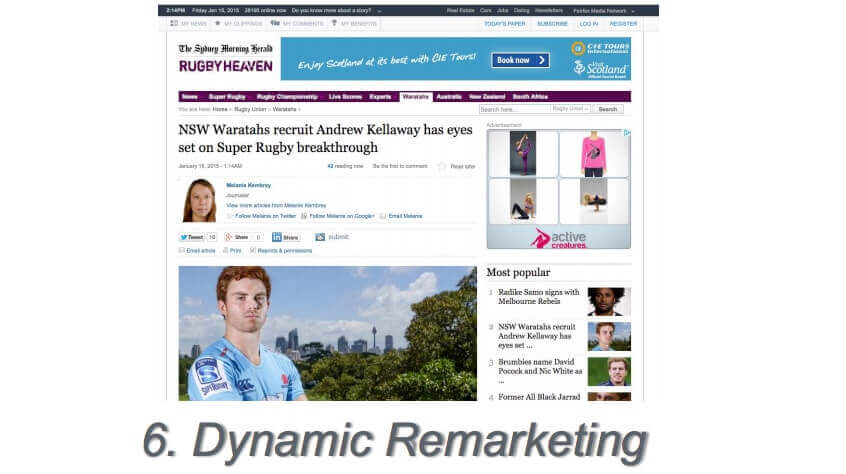
So what this whole series allows you to do, the profit triad of eCommerce, is architect what I call a perfect storm. Get away from that one-shot marketing, get real momentum going, and really outperform your competition because chances are, they’re not going to be doing all of these things. Now you’ve got a good guide to get you started and implement at speed. I hope this short series was of some value to you. For those of who are doing eCommerce, you can definitely make your business more profitable!

